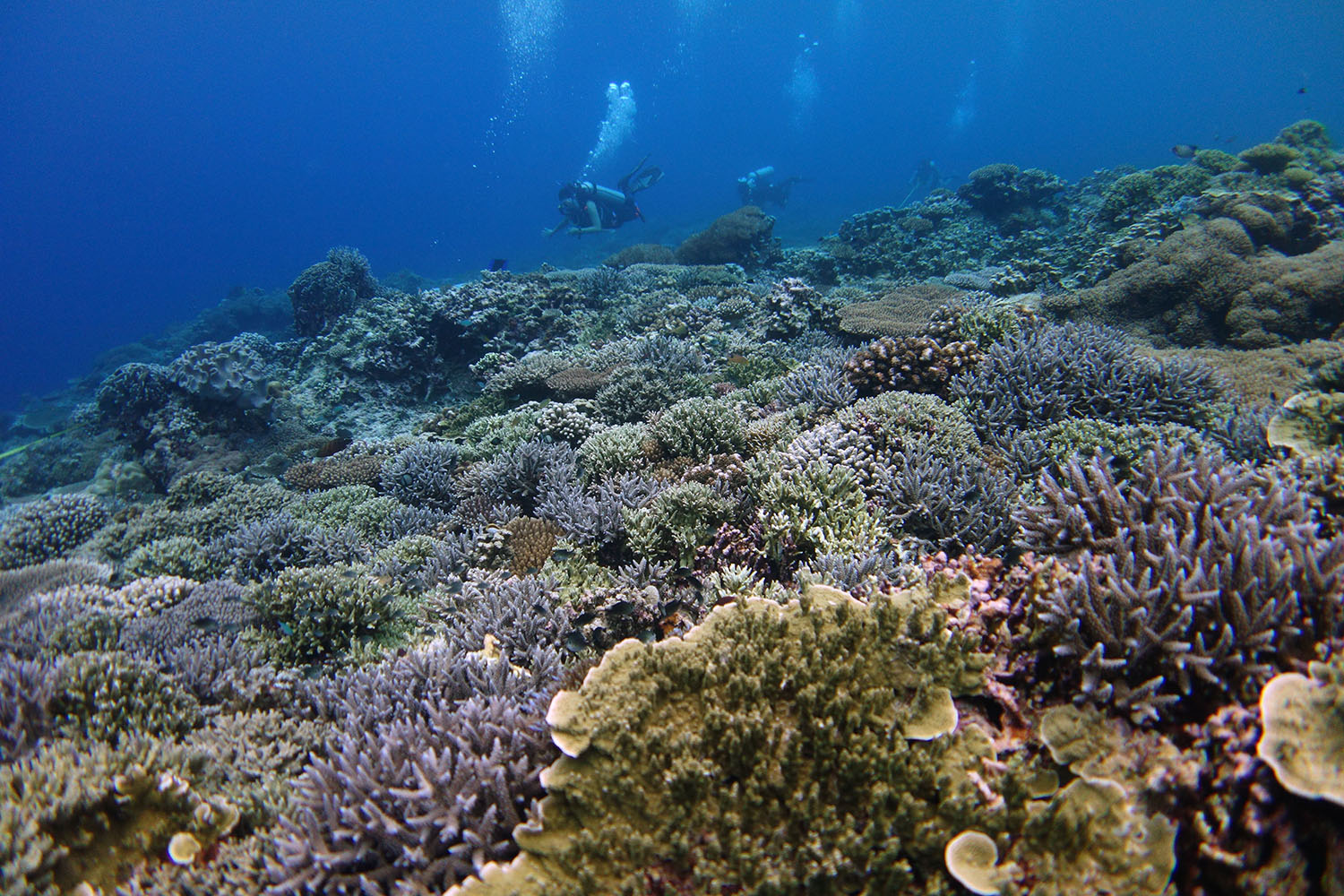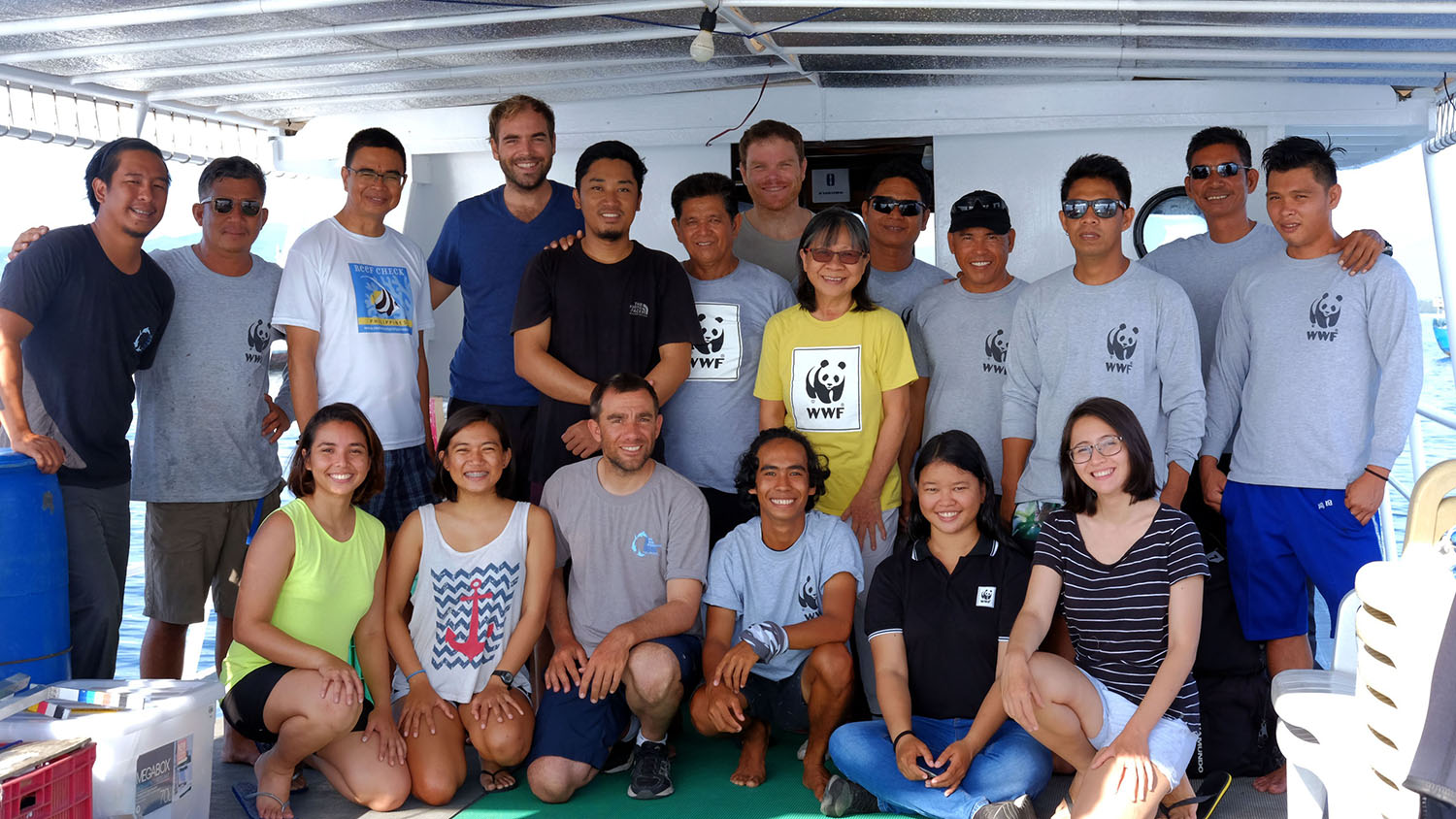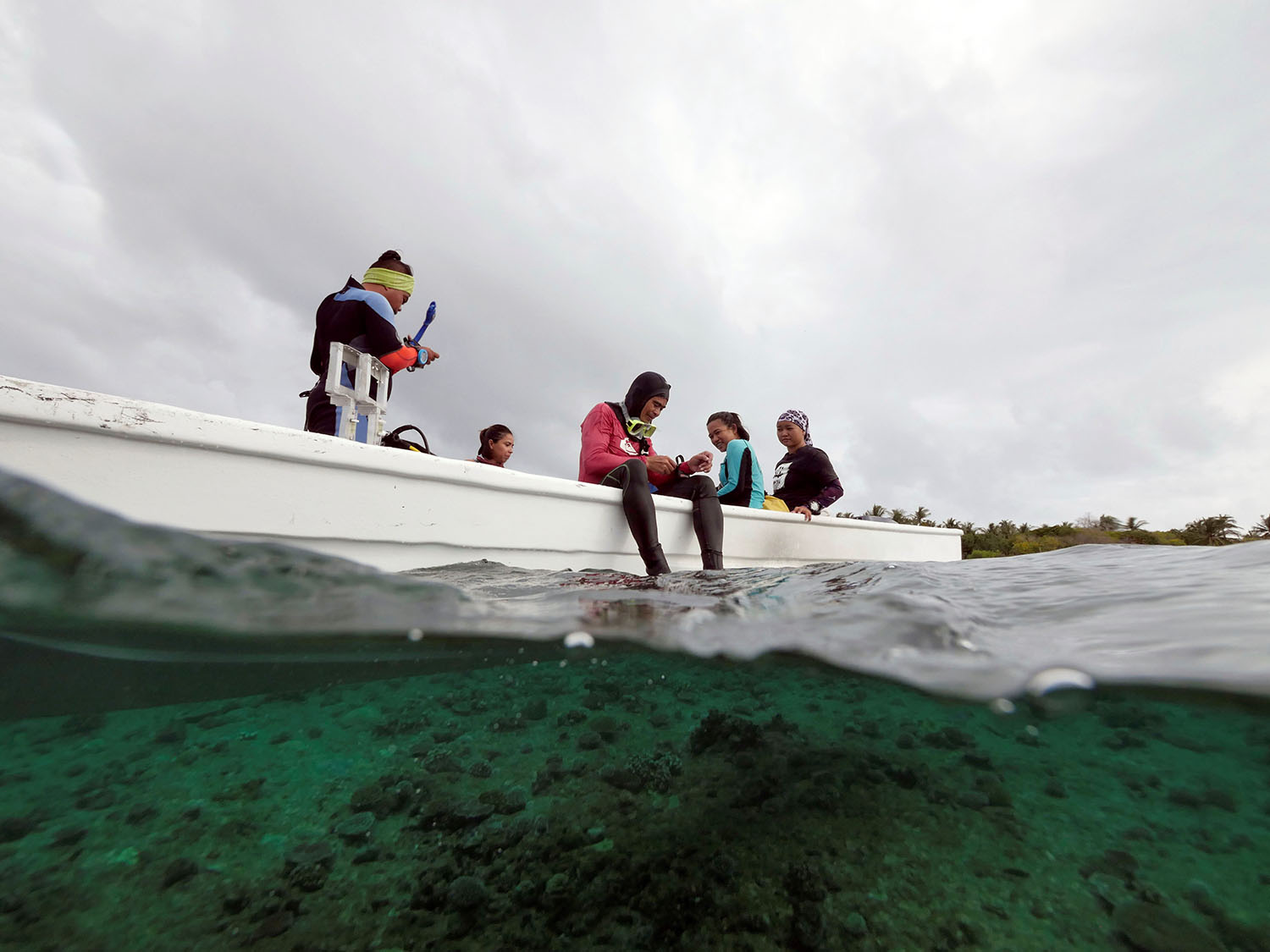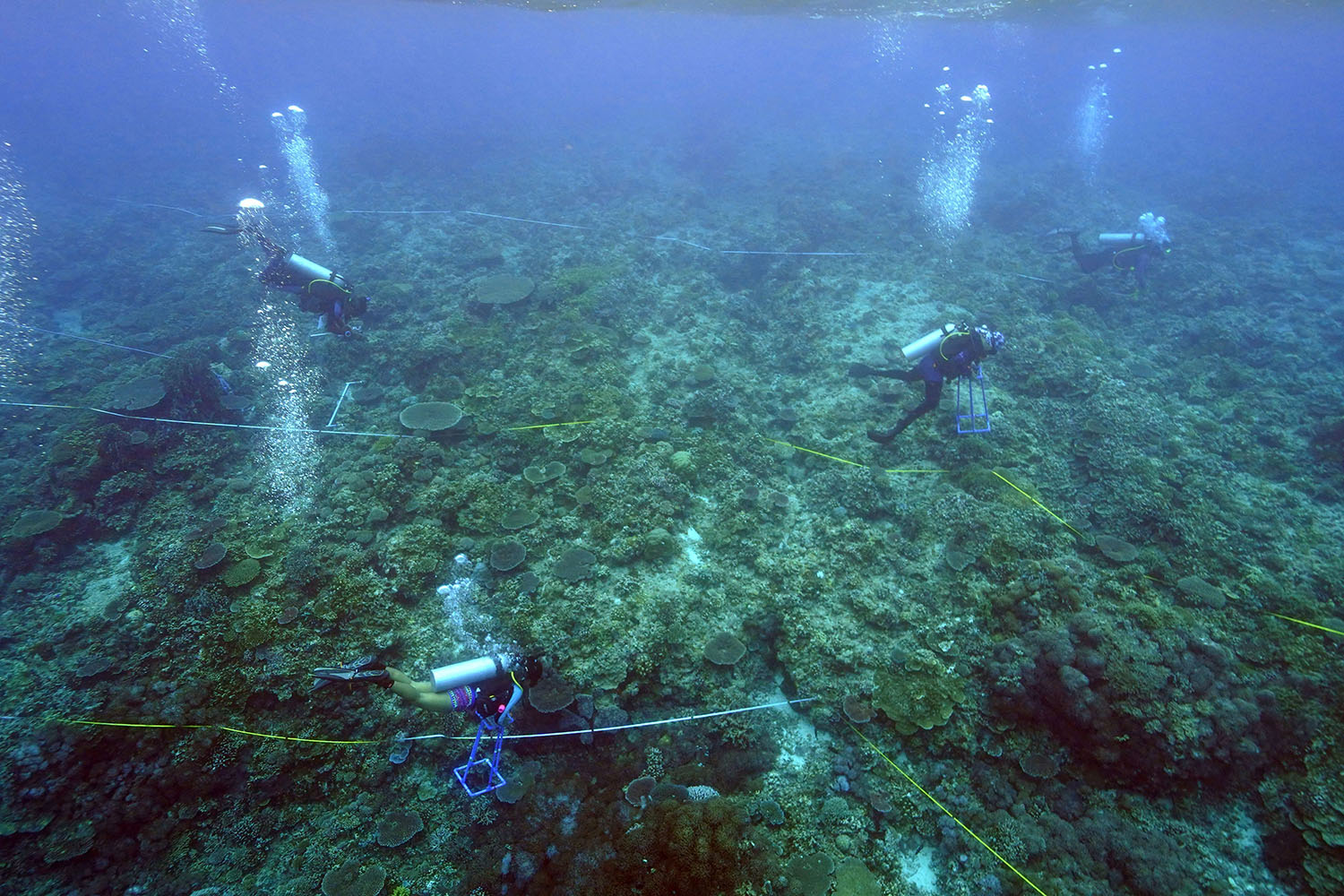Reef Monitoring System Vital for Reef Conservation and Management
June 2019

Reefs in Cagayancillo exhibiting hard coral cover index of atolls and diversity of inshore fringing reefs.
Palawan, Philippines — Sulu Sea, the richest reef region in the world, is home to 505 coral species and yet we know little about its reefs. With tourism booming exponentially in the Palawan islands, fishermen immigrating from nearby regions, and the seas warming, how are our corals coping? Which anthropogenic threats affect our reefs the most? Will corals in the Sulu Sea survive the warming waters? These questions seem basic yet no coral reef monitoring system is in place to help answer them.
Last April and May, Dr. Wilfredo Licuanan with his team of research assistants from the De La Salle University Br. Alfred Shields FSC Ocean Research Center (DLSU-SHORE) and the World Wide Fund for Nature (WWF) Philippines embarked on consecutive reef research trips to Tubbataha, Cagayancillo islands, Honda Bay, and Taytay, Palawan. This collaboration between DLSU-SHORE and WWF-Philippines, under a grant from WWF-Singapore, is called Designing of Monitoring and Evaluation System for Coral Reef Resilience and Fisheries Sustainability in Northeast Palawan through Marine Protected Areas (MPAs) or Network of MPAs.

Group photo from the joint cruise of DLSU SHORE, WWF-Philippines, and LAMAVE researchers in Cagayancillo, Palawan last May 3-10, 2019.
The project kicked off with a week-long cruise in Tubbataha Reefs Natural Park where 10 previously established coral monitoring stations were surveyed, including the ship grounding sites of Ming Ping Yu and USS Guardian.
In 2013, the grounding sites of the two vessels left fields of rubble, an environment where little to no coral could recruit. Upon consistent monitoring, Dr. Licuanan found that some plots, specifically in the USS Guardian are recovering. “Our projections on recovery rates at the USS Guardian site appears accurate. The impact plots should look like how it was before the grounding in four years. One Ming Ping Yu plot is also doing well,” expounds Dr. Licuanan.
On June 3 to 10, the research team established monitoring stations in Arena atoll, and Cawili, Calusa, and Dondonay islands, all part of the Cagayancillo group of islands 178 nautical miles off the coast of Puerto Princesa, Palawan and approximately four hours away from Tubbataha.
“The Cagayancillo reefs are interesting as most sites we visited have coral cover levels of oceanic reefs and atolls yet also have the diversity of inshore fringing reefs,” says Dr. Licuanan. During his surveys, he also observed that the corals in the Arena atoll are most likely prone to temperature fluctuation because of the surge of warm water from the lagoon as the tide changes. This brings him to a hypothesis that Arena might have climate-resilient corals. “I suspect it will be tested in the next few weeks as the seas are expected to get warmer in the region,” he adds, “I wish we can revisit those reefs sooner."

Reef survey team gears up for the establishment of a monitoring site in Calusa island, Cagayancillo, Palawan. Photo © Alessandro Ponzo / LAMAVE.
Before the month ended, DLSU-SHORE and WWF-Philippines organized a reef assessment training in Puerto Princesa with delegates from the Tubbataha Management Office, Western Philippines University, Palawan State University, Palawan Council for Sustainable Development, Office of the Provincial Agriculture, Office of the Puerto Princesa City Agriculture, Provincial Environment Office of the Department of Environment and Natural Resources, and Smart Seas Philippines.
This collaboration with concerned stakeholders and academic institutions is key for establishing a reef monitoring system in the region. "Working with local people to effectively manage MPAs entails having a common understanding about the situation of the marine environment in the area. Science plays a significant part to achieve this. As experienced in the past, research results help explain better the local observations and insights, thus creating a platform for meaningful conversations,” shares WWF-Philippines Project Manager Marivel Dygico.
For Dr. Licuanan, monitoring reefs is a necessary step after the three-year natiowide coral reef assessment project. “Monitoring allows us to generate information that we can act on and potentially save corals. Assessments are useful only for writing obituaries for nature.”

Team of researchers from DLSU SHORE and WWF-Philippines gathers data to assess coral cover and recruitment in Cagayancillo. Photo © Ryan Murray / LAMAVE.
-
For more information, please contact:
Ms. Marivel Dygico
Program Manager, WWF-Philippines
mdygico@wwf.org.ph
For media arrangements, please contact:
Mr. Dan Ramirez
Communications and Media Manager, WWF-Philippines
dramirez@wwf.org.ph
